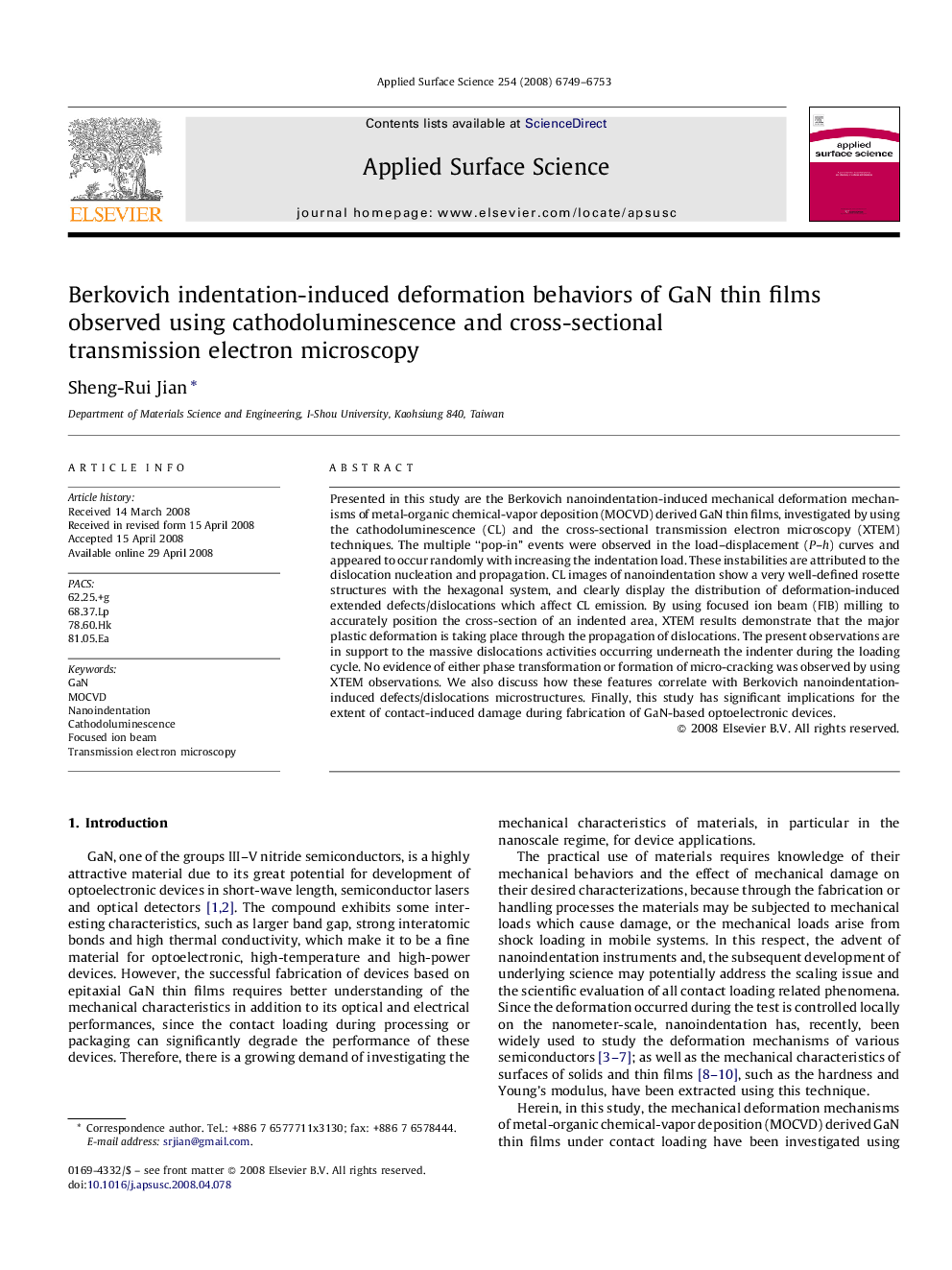| Article ID | Journal | Published Year | Pages | File Type |
|---|---|---|---|---|
| 5361529 | Applied Surface Science | 2008 | 5 Pages |
Abstract
Presented in this study are the Berkovich nanoindentation-induced mechanical deformation mechanisms of metal-organic chemical-vapor deposition (MOCVD) derived GaN thin films, investigated by using the cathodoluminescence (CL) and the cross-sectional transmission electron microscopy (XTEM) techniques. The multiple “pop-in” events were observed in the load-displacement (P-h) curves and appeared to occur randomly with increasing the indentation load. These instabilities are attributed to the dislocation nucleation and propagation. CL images of nanoindentation show a very well-defined rosette structures with the hexagonal system, and clearly display the distribution of deformation-induced extended defects/dislocations which affect CL emission. By using focused ion beam (FIB) milling to accurately position the cross-section of an indented area, XTEM results demonstrate that the major plastic deformation is taking place through the propagation of dislocations. The present observations are in support to the massive dislocations activities occurring underneath the indenter during the loading cycle. No evidence of either phase transformation or formation of micro-cracking was observed by using XTEM observations. We also discuss how these features correlate with Berkovich nanoindentation-induced defects/dislocations microstructures. Finally, this study has significant implications for the extent of contact-induced damage during fabrication of GaN-based optoelectronic devices.
Keywords
Related Topics
Physical Sciences and Engineering
Chemistry
Physical and Theoretical Chemistry
Authors
Sheng-Rui Jian,
